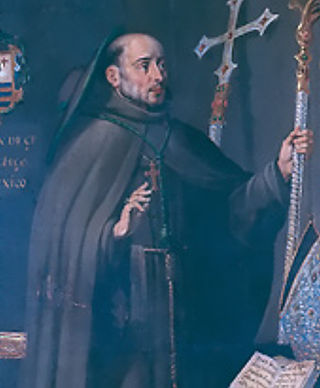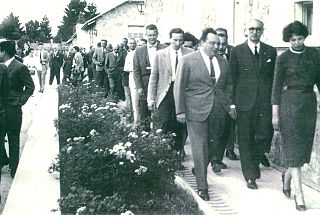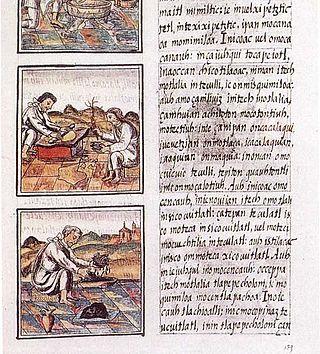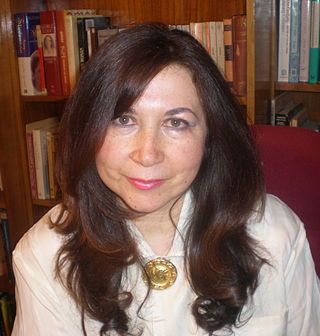
Alexander of Aphrodisias was a Peripatetic philosopher and the most celebrated of the Ancient Greek commentators on the writings of Aristotle. He was a native of Aphrodisias in Caria and lived and taught in Athens at the beginning of the 3rd century, where he held a position as head of the Peripatetic school. He wrote many commentaries on the works of Aristotle, extant are those on the Prior Analytics, Topics, Meteorology, Sense and Sensibilia, and Metaphysics. Several original treatises also survive, and include a work On Fate, in which he argues against the Stoic doctrine of necessity; and one On the Soul. His commentaries on Aristotle were considered so useful that he was styled, by way of pre-eminence, "the commentator".

Juan de Zumárraga, OFM was a Spanish Basque Franciscan prelate and the first Bishop of Mexico. He was also the region's first inquisitor. He wrote Doctrina breve, the first book published in the Western Hemisphere by a European, printed in Mexico City in 1539.

Luis de León, was a Spanish lyric poet, Augustinian friar, theologian and academic.

Fernando Vallejo Rendón is a Colombian-born novelist, filmmaker and essayist. He obtained Mexican nationality in 2007.

The University of Valladolid is a public university located in the city of Valladolid, Valladolid province, autonomous region of Castile and Leon, Spain. Established in the 13th century, it is one of the oldest universities in the world. The university has 26,000 undergraduate students and more than 2,300 professors.

The University of the Cloister of Sor Juana is a private university located in the former San Jerónimo Convent in the historic center of Mexico City. This convent is best known for having been the home of Sor Juana Inés de la Cruz for over twenty five years, she produced many of her writings here. After the convent was closed in the 19th century, the large complex was divided and was home to a number of institutions and businesses, including a large dance hall in the mid 20th century. In the 1970s, the government expropriated the complex, explored it and began the restoration process. In 1979, the current university was founded at this site and it is currently the benefactor and guardian of the complex. The institution offers bachelors, two masters and two certificates, mostly in the humanities. The institution also sponsors or co-sponsors a number of cultural and educational activities, mostly situated in the historic center of the city.

The University of La Laguna is a public research university situated in San Cristóbal de La Laguna, on the island of Tenerife, Spain. It is the oldest university in the Canary Islands. The university has six campuses: Central, Anchieta, Guajara, Campus del Sur, Ofra and Santa Cruz de Tenerife.

José Antonio Balseiro was an Argentine physicist.

The Florentine Codex is a 16th-century ethnographic research study in Mesoamerica by the Spanish Franciscan friar Bernardino de Sahagún. Sahagún originally titled it: La Historia General de las Cosas de Nueva España. After a translation mistake, it was given the name Historia general de las Cosas de Nueva España. The best-preserved manuscript is commonly referred to as the Florentine Codex, as the codex is held in the Laurentian Library of Florence, Italy.

Martín de Rada was one of the first members of the Order of Saint Augustine (OSA) to evangelize the Philippines, as well as one of the first Christian missionaries to visit Ming China.

Alonso de Molina was a Franciscan priest and grammarian, who wrote a well-known dictionary of the Nahuatl language published in 1571 and still used by scholars working on Nahuatl texts in the tradition of the New Philology. He also wrote a bilingual confessional manual for priests who served in Nahuatl-speaking communities.

The Colegio de Santa Cruz in Tlatelolco, Mexico City, is the first and oldest European school of higher learning in the Americas and the first major school of interpreters and translators in the New World. It was established by the Franciscans on January 6, 1536 with the intention, as is generally accepted, of preparing Native American boys for eventual ordination to the Catholic priesthood. Students trained in the Colegio were important contributors to the work of Franciscan Bernardino de Sahagún in the creation of his monumental twelve-volume General History of the Things of New Spain, often referred to as the Florentine Codex. The failure of the Colegio had long-lasting consequences, with scholar Robert Ricard saying that "[h]ad the College of Tlatelolco given the country even one [native] bishop, the history of the Mexican Church might have been profoundly changed."
Blas Cabrera y Felipe was a Spanish physicist. He worked in the domain of experimental physics with focus in the magnetic properties of matter. He is considered one of the greatest scientists of Spain and one of the founders of the study of physical sciences in his country.

Héctor Jesús Zagal Arreguín is a Mexican philosopher, essayist, novelist, and associate member of Opus Dei. As a scholar he specializes in Aristotle.

Alonso Gutiérrez, also known as Alonso de la Vera Cruz (c.1507–1584) was a Spanish philosopher and Augustinian, who took the religious name da Vera Cruz. He became a major intellectual figure in New Spain, where he worked from 1535 to 1562, and from 1573 to his death, and in the history of Mexico.
Latindex is a bibliographical information system available for free consultation. Established as a network in 1997, the project is based on the cooperation of 17 national resource centers that operate in a coordinated scheme for the gathering and dissemination of relevant information and data on the Iberoamerican journals.

Beatriz Villacañas is a poet, essayist and literary critic.
Juan Manuel Lozano Mejía was a recognized Mexican physicist. He was one of the pioneers of nuclear physics in Mexico and an academic at Universidad Nacional Autónoma de México for over fifty years.
The Spanish Royal Physics Society (RSEF) is a non-profit institution for the branch of Physical Sciences resulting from the division in 1980 of the Spanish Royal Society of Physics and Chemistry (Real Sociedad Española de Física y Química, RSEFQ), founded in 1903, into the Royal Societies of Physics (RSEF) and Chemistry (RSEQ) of today. The RSEF has been officially recognised as an Association of Public Interest. It aims to promote and develop the basic knowledge of physics and its applications, and to encourage scientific research and teaching of physics in all reaches of education. The RSEF operates on a national scale and maintains international relations with other Societies with similar aims, including Iberoamerican Societies. More details and the Statutes of the RSEF can be found on its website, http://rsef.es/
Jenara Vicenta Arnal Yarza, was the first woman to hold a Ph.D. in chemistry in Spain. She was noted for her work in electrochemistry and her research into the formation of fluorine from potassium biflouride. In later years, she was recognized for her contribution to the pedagogy of teaching science on the elementary and secondary levels, with a focus on the practical uses of chemistry in daily life. She was awarded a national honor, the Orden Civil de Alfonso X el Sabio.















